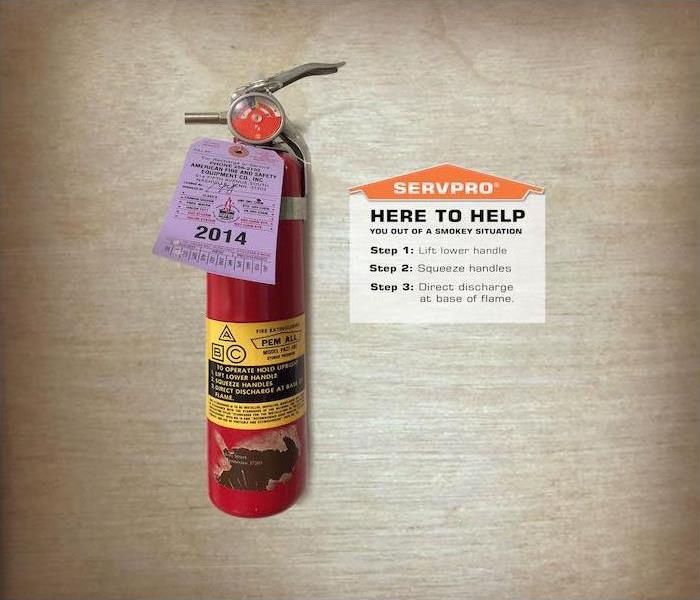The Different Types of Smoke
11/11/2019 (Permalink)
 Would you really want to trust your life to a fire extinguisher that looks like this? Your fire extinguisher should be inspected and well maintained.
Would you really want to trust your life to a fire extinguisher that looks like this? Your fire extinguisher should be inspected and well maintained.
The damage to your property following a fire can often be complicated due to the unique behavior of smoke. There are two different types of smoke, wet and dry. As a result, there are different types of soot residue after a fire.
SERVPRO of Bartow County professionals are thoroughly trained in fire cleanup and restoration and know the different types of smoke and their behavior patterns. Knowing this information is vital to proper restoration. Before restoration begins, SERVPRO of Bartow County technicians will survey the loss to determine the extent of impact from fire, smoke, heat, and moisture on the building materials and its contents. The soot will then be tested to determine which type of smoke damage occurred. Pretesting determines the proper cleaning method and allows your locally owned SERVPRO of Bartow County professionals to focus on saving your precious items.
SERVPRO of Bartow County professionals know smoke can penetrate various cavities within the structure, causing hidden damage and odor. Their knowledge of building systems helps them investigate how far smoke damage may have spread. The following points are additional facts you may not know about smoke.
- Hot smoke migrates to cooler areas and upper levels of a structure.
- Smoke flows around plumbing systems, seeping through the holes used by pipes to go from floor to floor.
- The type of smoke may greatly affect the restoration process.
Types of Smoke:
- Wet Smoke - (Plastic and Rubber) Low heat, smoldering, pungent odor, sticky, and smeary. Smoke webs are more difficult to clean.
- Dry Smoke - (Paper and Wood) Fast-burning, high temperatures; heat rises, therefore smoke rises.
- Protein Fire Residue - (Produced by evaporation of materials rather than from a fire) Virtually invisible, discolors paints and varnishes, extreme pungent odor.
- Fuel Oil Soot - (Furnace puff backs) While “puff backs” can create havoc for homeowners, SERVPRO of Bartow County professionals can, in most cases, restore the contents and structure quickly.
- Other Types - (Tear gas, fingerprint powder, and fire extinguisher residue) Special loss situations require special care.
Choosing the Appropriate Fire Extinguisher
Fire extinguishers should always be easy to access if there is an emergency. You don’t want to have to search for it once a fire breaks out. Don’t block fire extinguishers with furniture, boxes or any other items. Everyone who lives in the household should know where the closest fire extinguisher is located and how to use it in case of an emergency.
- Class A: This is the most common extinguisher and can be used to put out fires in ordinary combustibles such as cloth, wood, rubber, paper, and many plastics.
- Class B: Used on fires involving flammable liquids, such as grease, gasoline, and oil.
- Class C: Designed for fires involving appliances, tools, or other equipment electronically energized or plugged in.
- Class D: For use on flammable metals; often specific for the type of metal in question. These are typically found in factories.
- Class K: Intended for use on fires that involve vegetable oil, animal oils, or fats in cooking appliances. Generally found in commercial kitchens.
*for more information about smoke damage check out our previous blog "Don't Let Your Cartersville Apartment Go Up In Smoke".






 24/7 Emergency Service
24/7 Emergency Service